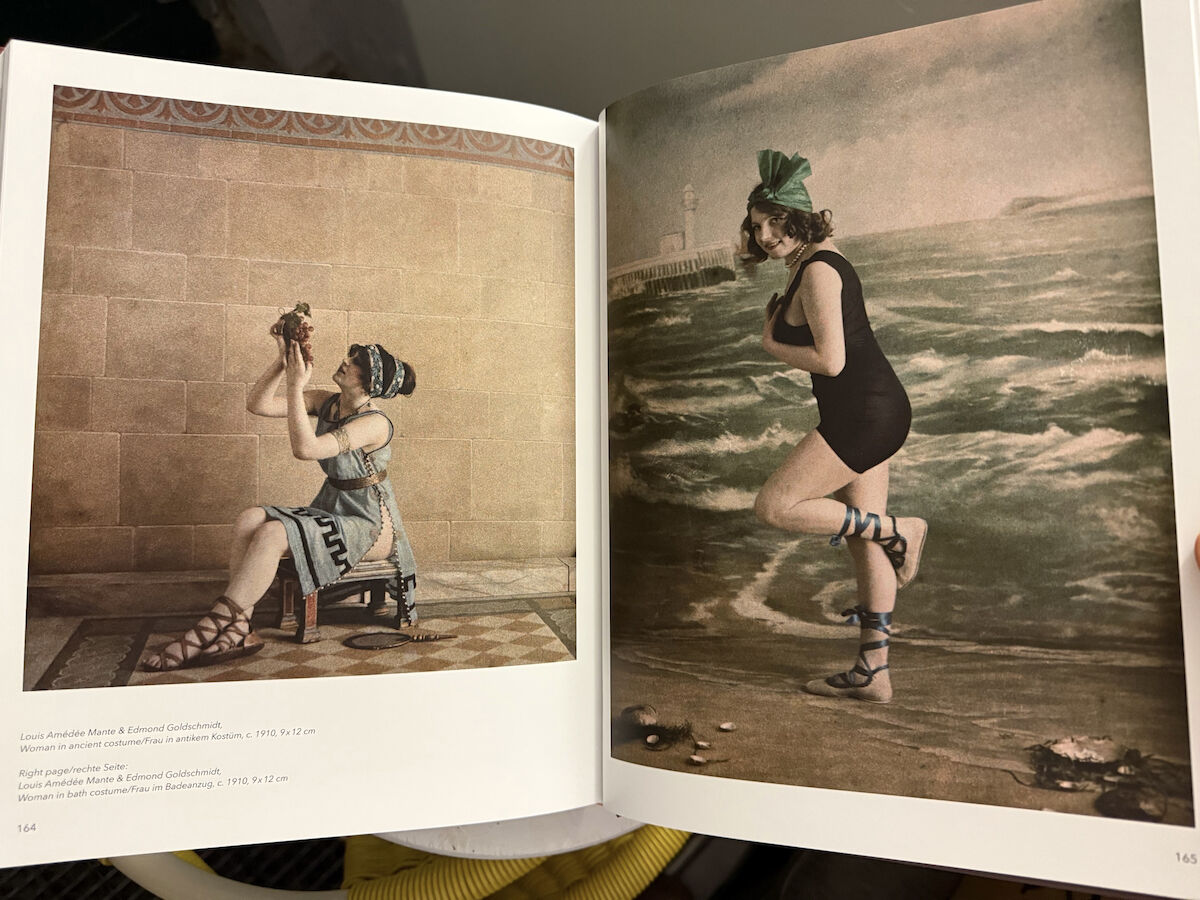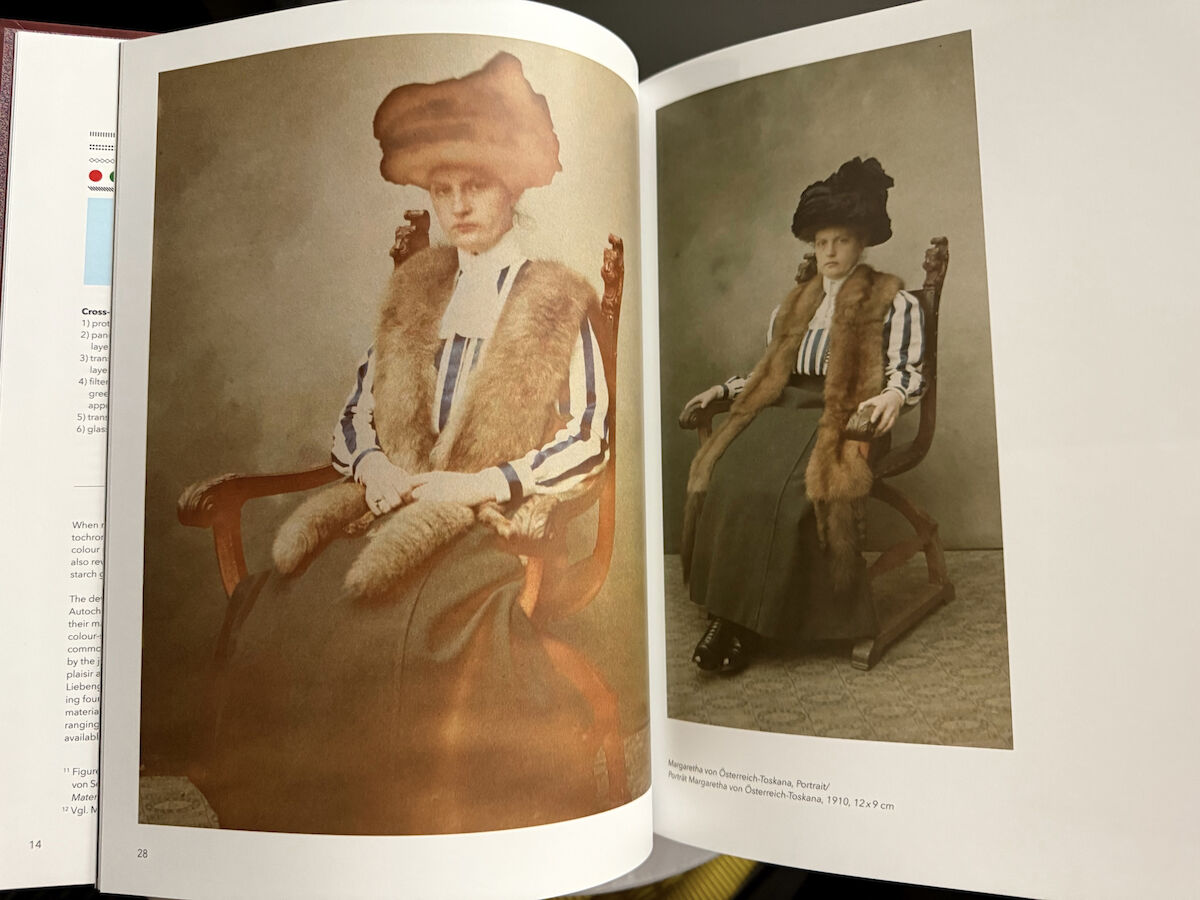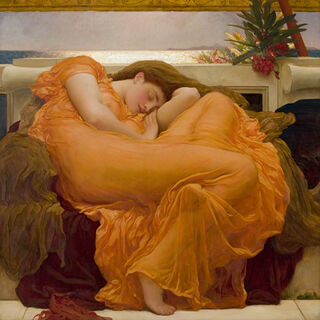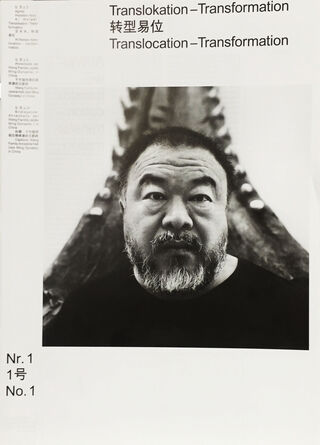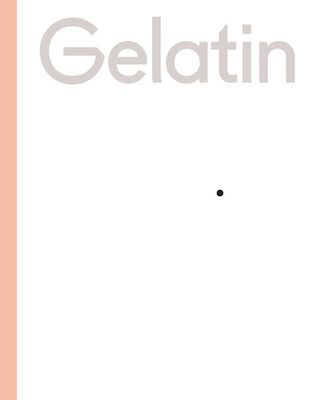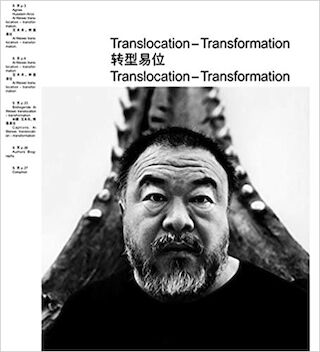Autochrome
The autochrome process, developed in 1904 by Auguste and Louis Lumière, represents the first industrially produced method of colour photography.
Based on microscopic grains of potato starch dyed in orange, green, and violet, the plates allowed light to filter through a mosaic screen, producing colour transparencies of remarkable delicacy. Presented to the public in 1907, the process spread rapidly across Europe and remained the dominant colour technique until Kodachrome in the mid-1930s.
The Austrian Photo Museum in Linz holds one of the most significant collections of historical autochromes in Europe, comprising more than 1,000 works. Among them are rare plates by the inventors themselves, as well as examples by early adopters such as Archduchess Margarethe of Austria-Tuscany and selections from the collection of Hans Frank, founder of the first Austrian photo museum in Bad Ischl.
This volume, edited by Maria Reitter-Kollmann and Alfred Weidinger, offers both a representative selection of the collection and an analytical introduction to the autochrome technique. The richly illustrated book contextualises the images historically and technically, while also demonstrating the cultural impact of colour photography in the first decades of the 20th century—when for the first time, the world could be seen and remembered in colour.






